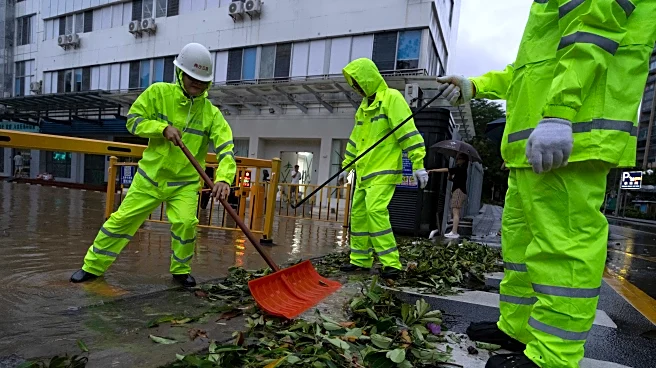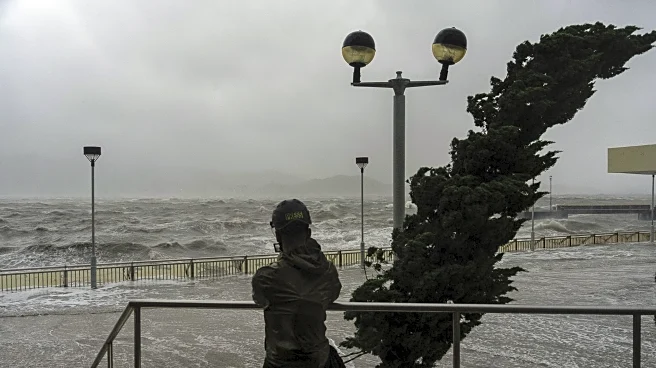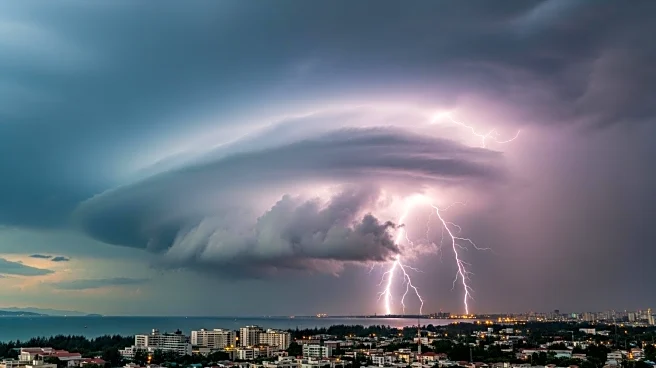What's Happening?
Typhoon Ragasa swept along the southern coast of China, bringing heavy rain, fierce winds, and coastal flooding as it approached landfall. Hong Kong issued its highest-level warning as the storm passed, causing parts of the city to flood. The storm was forecast to make landfall near Guangdong, China, prompting local officials to evacuate about two million people. Ragasa had previously left a trail of destruction in Taiwan, where at least 15 people died, and the Philippines. The storm was expected to weaken as it approached landfall near the Leizhou Peninsula.
Why It's Important?
The impact of Typhoon Ragasa highlights the vulnerability of densely populated coastal regions to severe weather events. The evacuation of millions in Guangdong underscores the potential for significant human and economic disruption. The storm's path through Taiwan and the Philippines, causing fatalities and damage, emphasizes the need for robust disaster preparedness and response strategies in affected areas. The situation in Hong Kong, with flooding and high winds, serves as a reminder of the challenges cities face in managing extreme weather conditions.
What's Next?
As Typhoon Ragasa continues its path, affected regions will need to focus on recovery and rebuilding efforts. The evacuation and emergency response in Guangdong will be critical in minimizing casualties and damage. Authorities in Hong Kong and other affected areas will likely assess infrastructure resilience and disaster preparedness to better handle future storms. The broader implications for climate change and its role in intensifying weather patterns may prompt discussions on sustainable urban planning and environmental policies.











